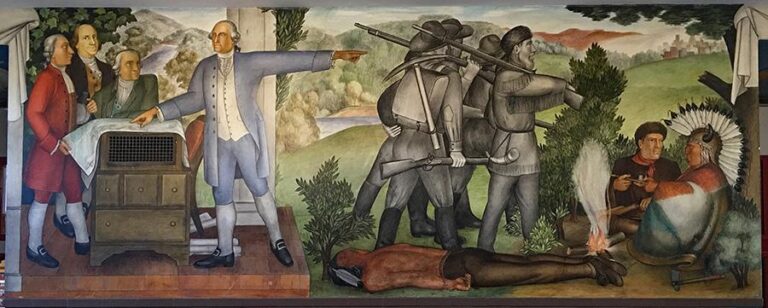San Francisco School Board Reconsiders Mural Removal Amid Public Debate
The San Francisco school board has recently withdrawn its plan to cover a historic mural illustrating scenes of slavery and violence, responding to intense public opposition and widespread discussion. This mural, situated within a local high school, has been at the heart of a contentious debate between those who view its graphic imagery as harmful and those who emphasize its importance as a historical and educational artifact. This reversal reflects a broader national dialogue on how communities choose to represent difficult histories in public spaces, touching on themes of race, memory, and education.
Public Outcry Shapes the Reversal of the Mural’s Fate
The initial decision to paint over the mural ignited a strong backlash from various community groups, including historians, artists, educators, and civil rights advocates. Many argued that removing the artwork would amount to erasing a vital visual record of America’s painful past, thereby limiting opportunities for meaningful conversations about systemic racism and social justice. Instead, they called for preserving the mural as a catalyst for education and reflection.
Major concerns raised by the community included:
- The danger of historical erasure versus the benefits of confronting uncomfortable truths.
- The mural’s potential as an educational tool to illustrate the realities of slavery and racial violence.
- The need for contextual information to accompany the artwork, enhancing understanding rather than censoring it.
- Inclusive decision-making processes involving students, artists, and local residents.
| Group | Initial Stance | Recommended Approach |
|---|---|---|
| School Board | Planned to paint over | Reversed decision; seeking community input |
| Community Advocates | Opposed removal | Preserve mural and promote education |
| Historians | Support preservation | Introduce interpretive signage |
| Artists | Defended mural’s integrity | Maintain original artwork |
Community Engagement: A Driving Force Behind Preservation
Community involvement proved crucial in influencing the school board’s decision to halt the mural’s removal. Through public forums, social media advocacy, and town hall meetings, diverse voices emphasized the mural’s role as a historical reminder rather than a mere disturbing image. They stressed that confronting difficult aspects of history is essential for fostering empathy and critical thinking among students.
Community priorities highlighted:
- Preventing the erasure of history while encouraging open dialogue.
- Recognizing the mural’s value in educating about systemic injustice.
- Supporting restoration efforts paired with contextual educational materials.
| Stakeholder | Viewpoint | Proposed Action |
|---|---|---|
| Local Historians | Preserve mural | Install explanatory plaques |
| School Board | Reversed initial removal plan | Organize educational workshops |
| Community Activists | Opposed removal | Host public discussions |
Striking a Balance: Educational Impact and Sensitivity in School Art
Addressing controversial artwork in educational settings requires a nuanced approach that honors historical accuracy while respecting the emotional impact on students. The debate over the mural’s removal underscored the challenge of presenting painful histories without silencing them. Many educators and experts argue that such murals serve as vital visual prompts for critical conversations about past injustices, helping students develop a deeper understanding of social issues.
Essential factors in managing sensitive school art include:
- Providing historical context through supplementary educational resources.
- Involving a broad range of stakeholders‚ÄĒstudents, parents, educators, and experts‚ÄĒin decision-making.
- Creating alternative platforms for students to explore and express diverse viewpoints.
- Ensuring that the artwork encourages reflection rather than glorifying violence.
| Method | Objective | Result |
|---|---|---|
| Preservation with Contextualization | Use mural as an educational resource | Improved critical awareness and dialogue |
| Covering or Altering Artwork | Reduce exposure to graphic imagery | Loss of educational opportunities |
| Supplementary Educational Programs | Facilitate discussion and reflection | Inclusive and comprehensive learning environment |
Experts Advocate for Collaborative and Transparent Art Policy Development
The school board’s decision to preserve the mural has reignited calls from cultural scholars and historians for a more inclusive and transparent process in determining the fate of public artworks. Experts emphasize that policies regarding sensitive historical art should be shaped through broad community engagement, ensuring that diverse perspectives are heard and respected.
Recommended strategies for future policymaking include:
- Creating open forums where educators, artists, students, and community members can discuss the complexities of historical art.
- Forming advisory panels composed of historians and cultural experts to provide nuanced interpretations and guidance.
- Developing clear, transparent criteria for evaluating public art that balances preservation with sensitivity to affected communities.
| Participant | Role | Expected Benefit |
|---|---|---|
| School Board | Lead policy implementation | Decisions reflecting community values |
| Community Members | Contribute perspectives and concerns | Enhanced inclusivity and trust |
| Artists and Historians | Offer expert context and analysis | Greater educational impact |
Conclusion: Navigating the Complexities of Historical Representation in Schools
The San Francisco school board’s reversal on the mural removal highlights the ongoing challenges communities face when addressing difficult historical narratives in public spaces. This case exemplifies the delicate balance between preserving artistic and educational value while being sensitive to the emotional impact on viewers. As schools and communities continue to wrestle with these issues, the board’s approach may serve as a model for handling similarly contentious artworks, emphasizing dialogue, inclusivity, and education as key pillars.




